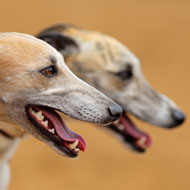New online database shows calf BVD status
.jpg)
XLVets have announced the launch of a central, fully accessible web-based database which provides verification of a negative test result for bovine viral diarrhoea (BVD).
The database is central to the "BVD Check Tag" initiative, which uses branded white ear tags as part of a BVD status testing procedure. The tags show that an animal has been tested for BVD and provide an easily identifiable and highly visible prompt for calf buyers to check test results online before purchase.
The main aims of the initiative are to improve the identification of source farms and reduce the risks of infected persistently infected (PI) calves moving from unit to unit, thereby stemming the spread of the disease.
“BVD is primarily spread by PIs, which are calves born from cows that are infected with BVD,” explains Dan Humphries from the XLVets’ practice Lambert, Leonard and May. “These PI calves often appear normal but will spread infection to other cattle that they come into contact with. It’s therefore critical that we remove these animals from the breeding herd and also ensure that they are not sold into other herds.
“By identifying PIs, ideally shortly after birth and certainly before they move from their home unit, we can minimise the spread of BVD and also offer more targeted control programmes in herds that are identified as infected.”
The scheme is entirely voluntary, with farmers first having to make the decision to use the tissue sample testing technology to initiate the process. The BVD Check Tag tags are available from a number of tag suppliers, with tissue analysis either carried out by the vet practice or through a central laboratory, depending on the type of tag used.
Once calves are tagged and the tissue samples analysed, results are recorded via the farm's veterinary practice onto the database, which then provides verification of all calves testing negative through the scheme.



 The Greyhound Board of Great Britain has published new vaccination guidance, with all greyhounds registered from 1 January, 2027 required to have the L4 leptospirosis vaccination, rather than L2.
The Greyhound Board of Great Britain has published new vaccination guidance, with all greyhounds registered from 1 January, 2027 required to have the L4 leptospirosis vaccination, rather than L2.